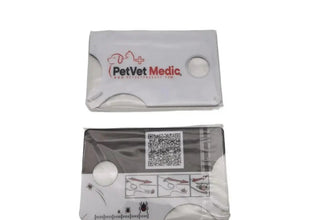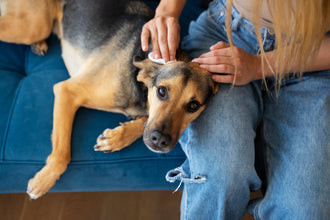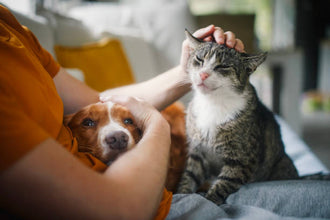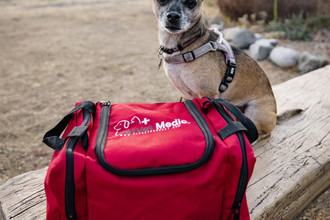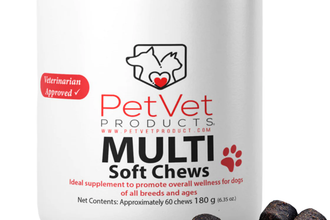
At Pet Vet Products, we understand that your pets are more than just animals—they're cherished family members. That's why we offer only the best in pet care products and cat emergency kits. With over 25 years of veterinary experience, Dr. Leah Hill has shaped our range to help cat owners manage injuries and emergencies with confidence, care, and clarity.
Whether it’s a minor scratch or a more serious wound, having the right knowledge and tools at home can make all the difference. Cat injury treatment isn’t just about applying a bandage—it’s about understanding what to do, how to do it, and when to seek help. Treating your cat’s injuries quickly and safely starts with proper awareness and the right approach.
Let’s discuss how you can support your cat through minor injuries using reliable guidance and essential supplies.
Know the Basics: Understanding Common Cat Injuries

Cats are curious by nature, and their adventurous spirits sometimes lead them into risky situations. From torn claws and bite wounds to scrapes and bruises, cats are no strangers to minor accidents.
Cat injury treatment begins with recognizing the type and severity of the wound. Is it bleeding? Is there swelling? Is your cat limping, licking the area excessively, or hiding more than usual? These are all signs that your feline friend might be in discomfort and could need attention.
One of the most important steps in managing an injury is staying calm. Cats are sensitive to emotions. Staying steady and speaking softly will help your cat feel safer during the process.
First Response: Stay Prepared with a Cat Emergency Kit
Having a well-stocked cat emergency kit at home can save time and reduce stress during an injury. This should include items like gauze, antiseptic wipes, tweezers, gloves, adhesive tape, and a pet-safe disinfectant.
Our kits are specially designed for this purpose, based on real-life veterinary needs. Dr. Leah Hill and her team have ensured that these kits come with everything you might need, from minor wound care to urgent first aid.
Using your kit correctly also matters. For instance, always clean a wound gently before applying any dressing. Use gloves to avoid infection, and avoid using human medication unless directed by a vet.
If bleeding is present, apply gentle pressure with a clean gauze pad. Keep your cat still and as calm as possible until the bleeding stops. This might take a few minutes, and your reassuring voice can make a big difference.
How to Care for Cuts and Scratches
With the right approach, most surface wounds and scratches can be treated at home. Start by cleaning the area with warm water or a saline solution. Avoid alcohol-based products, as they sting and may scare your cat.
Once the wound is clean, pat it dry gently. Apply a pet-safe antiseptic, and keep the area dry and exposed to air if possible. Check the wound daily for signs of healing or infection, such as redness, swelling, or an unpleasant smell.
Make sure your cat isn’t licking the wound too much. You may need to use a soft recovery collar to prevent interference. Overlicking can delay healing and introduce bacteria.
Cat injury treatment at this stage requires daily care and observation. You don't need to be an expert—just attentive and gentle.
Dealing with More Serious Injuries

If your cat has a deep cut, heavy bleeding, or is in clear pain, it’s best to contact a vet immediately. While you wait, your job is to stabilize the injury. This includes cleaning the area carefully and applying a temporary dressing.
Do not try to remove embedded objects or clean very deep wounds yourself. These require veterinary equipment and expert handling. However, your cat emergency kit and knowledge can still offer immediate support until professional care is available.
In such moments, Pet first aid charts and guides become useful. These visual aids help you decide what to do quickly, offering step-by-step instructions for different types of injuries. We include these in our emergency kits because we know that clear, simple guidance matters when every second counts.
Signs of Infection and When to Call the Vet
Even with the best home care, injuries can develop complications. Watch closely for signs that an injury is not healing well.
If your cat develops a fever, the wound becomes red or swollen, or there’s pus, these are all signs of infection. A sudden change in your cat’s behavior—such as hiding, refusing food, or becoming aggressive—may also be a clue that something isn’t right.
Don't wait too long. A quick phone call to your vet could prevent a more serious issue. It’s always better to check than to assume.
Remember, our team is not just focused on products—we also offer support and advice to help you do what’s best for your pet.
Making Healing Easier for Your Cat
After the initial care, it’s important to support your cat’s recovery. Give them a quiet, safe space to rest. Keep other pets or small children away, and reduce stress in the home by limiting loud noises or disruptions.
Keep the wound clean and monitor progress. If your cat is on medication, follow the dosage instructions closely. Always finish a full course of antibiotics if prescribed, even if the wound appears healed.
Good nutrition also plays a role in healing. A well-fed, well-hydrated cat will bounce back faster. Talk to your vet about supplements or dietary adjustments that might help during recovery.
By taking a calm and informed approach to cat injury treatment, you're showing your pet love in one of the most powerful ways—through care and comfort.
The Importance of Being Ready for the Unexpected

Injuries can happen in a flash. That’s why being prepared isn’t just helpful—it’s essential. Keeping a cat emergency kit on hand means you’re ready to respond quickly and safely.
We don’t just sell supplies—we provide peace of mind. With pet care products developed by experienced vets and backed by real-life needs, we aim to make your job as a pet parent easier and more effective.
Our pet first aid charts and guides are there when you need instant direction. And our products are designed not just for emergencies, but also for everyday pet health.
Conclusion
Caring for your cat after an injury doesn’t have to be overwhelming. With the right supplies, a little guidance, and a lot of love, you can handle most minor wounds confidently at home.
When in doubt, consult your vet. And always keep your cat emergency kit in an easy-to-reach place—you never know when it might come in handy.
Trust your instincts. Your cat counts on you for comfort and safety. And with the right tools, you can offer both in any situation.
Be ready for the unexpected. Explore our full range of cat injury treatment supplies, pet care products, and emergency kits at Pet Vet Products.
With expert guidance from Dr. Leah Hill and a commitment to quality, our products are here to help you protect what matters most—your beloved cat.
Visit Pet Vet Products today and prepare with care.





